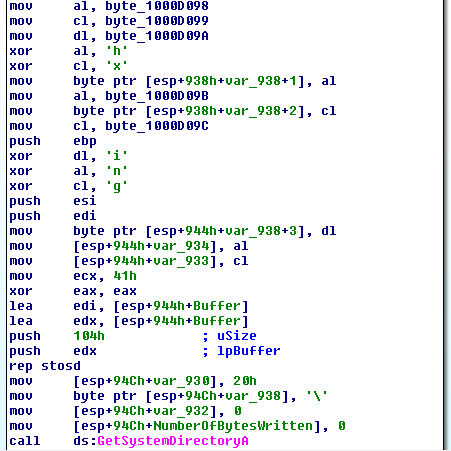Status
Let’s face it:
px~NFEHrGXF9QA=2/5mGabiSKSCIqbiJwAKjf+Z81pOurL1xeCaw=1/xXiPyUqR/hBL9DW2nbQQEDwNXIYD3l5EkpfyrdVpVC8kp/4WeCaArZAnd+QEYVSY9QMw=2
qFUtb6Sw/TytLfLsy/HnqI8QCX/ZRfFP9KL/_2yA9GIK/iufEXR2r/e6ZFBfoN/fcgL04f7/ZBzUuV5T/Balrp2Wm
What about it? Could it be the same kind of things, huh? Let’s dig a little deeper inside the code to check if it is just some sort of coincidence or if it is indeed the same code that is behind these two pieces of malware.
PWC explain it pretty well: the URI is made of some sort of Base64-encoded strings with the middle one being the seed to be associated to the master key to decrypt the whole thing. Actually:
URI = E1/E2/E3/E4/E5
and to obtain Di (the original data that gives us Ei once encrypted), we must perform the following operation:
Di = rc4(md5(custom_debase64(E3)+master_key)).decrypt(Ei)
where master_key is “OrcaKiller” for the OrcaRat sample.
What can we find in LeoUncia that is to be found in OrcaRat too?
URI decryption
First, let’s have a look at the URI decryption routine.
Dealing with OrcaRat, we have seen the following algorithm:
Di = rc4(md5(custom_debase64(E3)+master_key)).decrypt(Ei)
When we talk about LeoUncia, we can have a look at the blog posts made by FireEye back in December 2010, especially the second one, where some assembly code has been screenshot from IDA without ever giving the name of the underlying algorithm: yes, it is RC4!
Once decoded from Base64, the binary data we obtain from the URI is comprised of two parts: the first 16 bytes are the decryption key, and the rest of the data is the information to be decrypted. Putting back pieces together, we have the following algorithm for LeoUncia:
D = rc4(custom_debase64(E)[:16]).decrypt(custom_debase64(E)[16:])
The two samples both share a “custom” Base64 encoding with the use of RC4; nothing fabulous, but it is a start.
Encoding
We dig further with the encoding algorithm: the so-called “custom” Base64.
In both case, the first goal of the customization is to avoid the presence of some “/” in any encoded data, because it would break down the process of cutting the URI along with the “/” separator. For LeoUncia, the Base64 being used is the Base64-URI that replaces “+” and “/” by “.” and “_”, while for OrcaRat, “+” are kept and “/” are replaced by “~”.
Additionally, OrcaRat authors thought it would be great if the URI was a little less obviously Base64-related. So, rather than splitting every eight characters to avoid having “=” in the URI, they decided that replacing the endings “=” in “=1” and “==” in “=2” would be a great improvement.
Hibernation feature
Let’s have a look at one of the feature of LeoUncia: the hibernate feature.
The feature does the same in OrcaRat: check for some date and time written in a file, and sleep for as long as needed before deleting the aforementioned file. (We would also notice that an useless call to FileTimeToSystemTime has been removed meanwhile.)
The real difference lies in the obfuscation of the filename: LeoUncia was using a plain-text filename (“readx”), whereas OrcaRat is obfuscating (just the same way it obfuscates the Campaign ID) this data: the filename is “wbt.dat” (obfuscated string XORed character-by-character with the XOR key “product”) and it is located in the “App Data” folder of the user OrcaRat is running with.
Code seen in a very old LeoUncia sample: plain-text hibernation filename.




